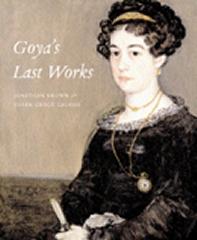Francisco Jose de Goya y Lucientes (1746- 1828) had a prolific career and spent the last four years of his life living in Bordeaux with other political emigres from Spain and South America. In those years and just before his departure from Spain he created a body of work that is little known to the public and consists of small-scale, intimate pieces, including uncommissioned portraits of friends and family, miniature paintings on ivory plaques and numerous drawings and lithographs. These simple, bold and brilliant works attest to the artist's continuing vitality in his old age and also offer some insight into the life he led during that last period in Bordeaux. They are the culminating achievement of a great artist who was, in his own words, 'still learning' as he faced death. This beautiful book will accompany an exhibition at "The Frick Collection", New York. It opens with two essays. The first, by Jonathan Brown, retells the story of Goya's eventful late years - plagued by ill health, displaced by exile and preoccupied with family matters.
In the face of these hardships Goya not only continued to make art, he experimented with the new medium of lithography and invented a technique of miniature painting on ivory; and from time to time he took brush in hand to paint portraits of friends and supporters which are understated tours-de-force of conception and technique. The second essay, by Susan Grace Galassi, sets the scene of Goya's last years in the rich historical and cultural milieu of Bordeaux. The painter's friendships with eminent fellow expatriates in Bordeaux's Spanish community are also examined. The intertwined lives of family and friends set in the cosmopolitan French seaport create a biographical context and sense of place for an appreciation of Goya's little-known, triumphant final achievement. The book concludes with a catalogue of fifty-one key works from Goya's late period.

(0 Comentarios)